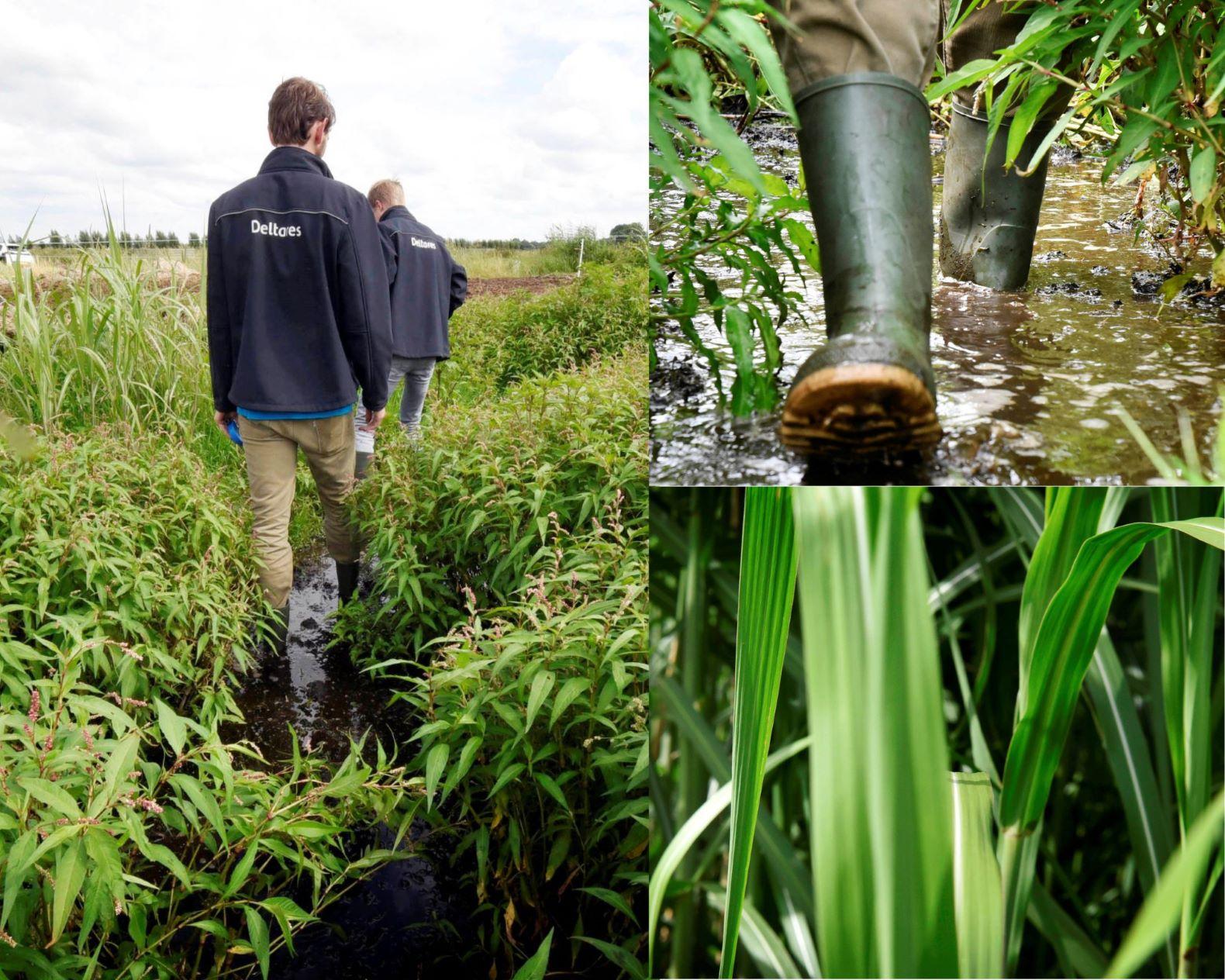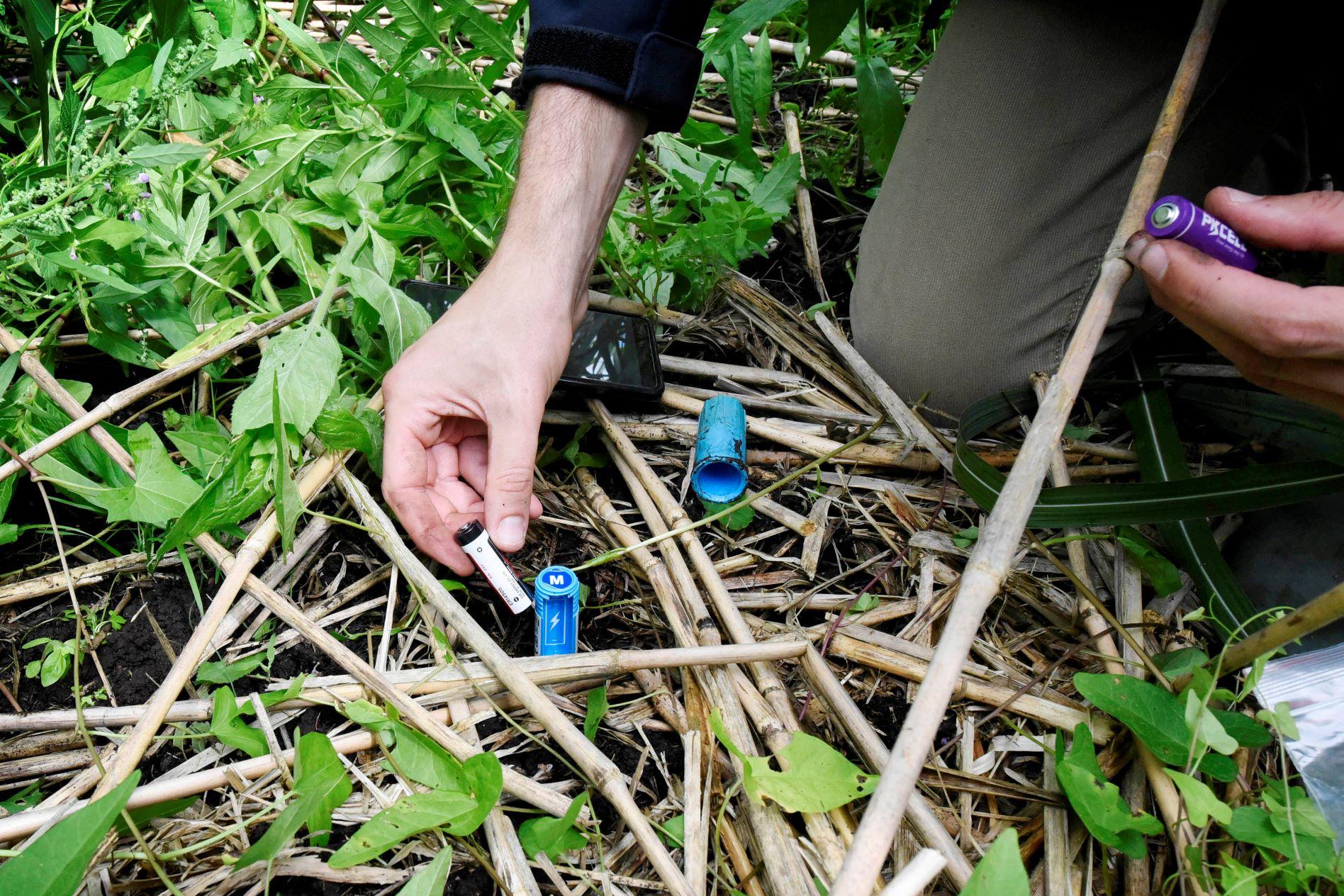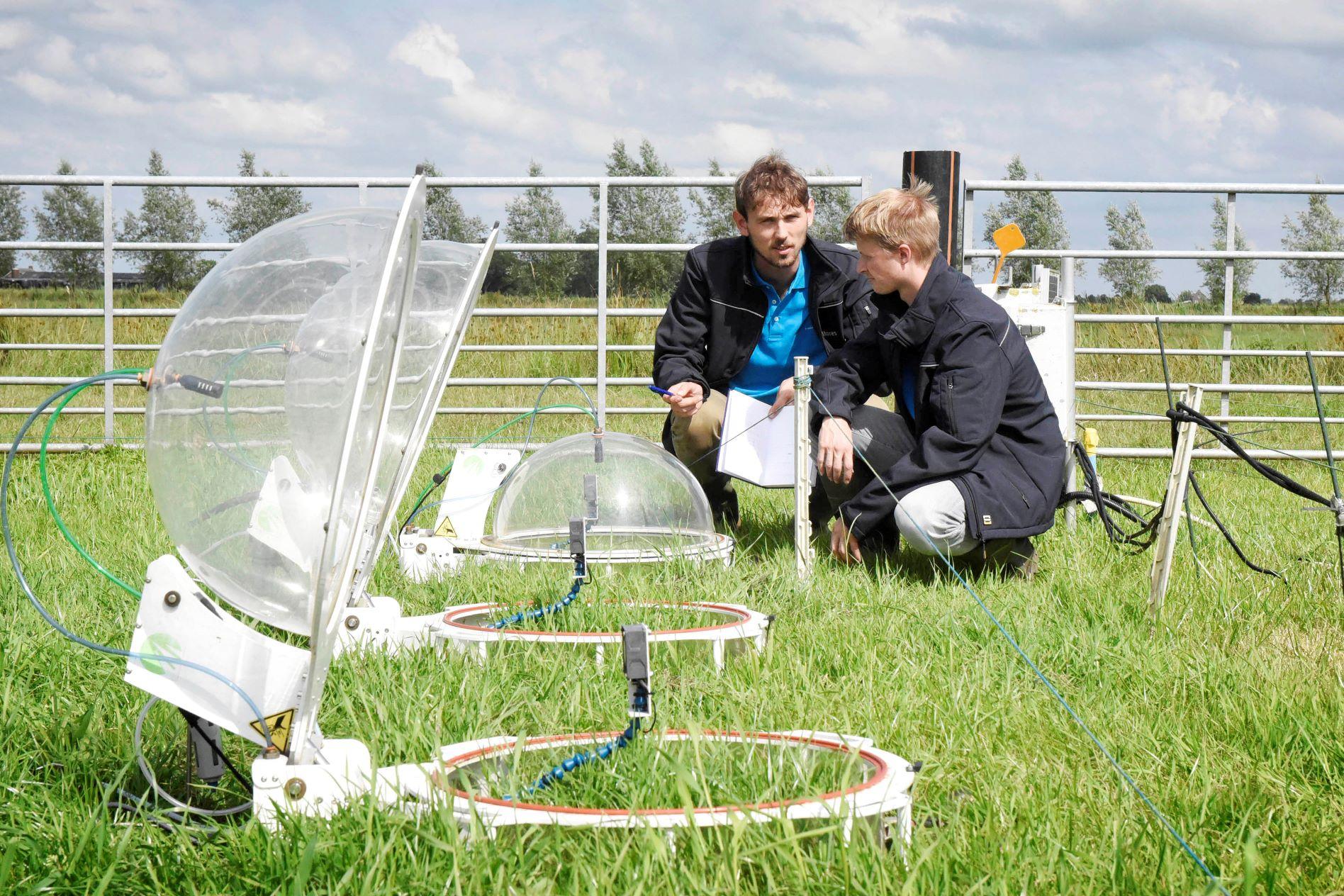Does wet cultivation work against peat degradation?
Does elephant grass like wet feet? Exactly how wet can they be? And does growing this crop help against peat degradation, land subsidence and thus greenhouse gas emissions? Deltares researchers Siem Jansen and Jesse Reusen hope to find answers to these questions in a meadow in Zegveld, Zuid-Holland.

Between the cows and the man-sized elephant grass, they check the three monitoring points they have installed in this plot. In rain boots, because “the groundwater here is up to ten centimetres above ground level in some places, so the meadow is quite boggy,” Siem says. Consequently, this meadow is part of the KTC test farm in Zegveld. There are some of the test sites where the National Research Programme Greenhouse Gas Peat Meadows (NOBV), led by Deltares, is looking at the effectiveness of various measures against peat degradation.
For passable pastures, the Dutch usually drain a lot of water, giving oxygen and bacteria free rein on peatland areas. This causes peat degradation, releasing the greenhouse gas CO2, Siem explains. “And that's exactly what you want to prevent.” A so-called wet crop like elephant grass or miscanthus, which thrive at high groundwater levels, could prevent peat degradation. Scientists also expect this crop to purify water, retain water and thus prevent flooding, could serve as a biobased building material and increase biodiversity. “High groundwater levels can in turn release other greenhouse gases, such as methane and nitrous oxide. That's why we are investigating this,” Siem says.
High groundwater levels can in turn release other greenhouse gases, such as methane and nitrous oxide. That's why we are investigating this.
Siem Jansen
Advantages of elephant grass
“Elephant grass has many advantages: it grows quickly, produces good crops for a long time, fertilisation and watering are not necessary and you only need to mow once a year.” The strong fibres of this crop make it suitable as insulation material in construction, as well as for other purposes. “At almost every festival I was at this summer, there was elephant grass on the ground so we didn't sink into the mud,” Siem laughs.

Siem and his colleagues' measurements should show whether this wet crop does well in high groundwater levels. Five times a year, they travel to Zegveld to check the measuring equipment and collect data. Today, Siem replaces the batteries of the loggers, which measure the groundwater level in the monitoring wells, at different distances from the ditch.
Using a measuring tape, he checks whether the loggers are retrieving the correct information. Jesse and he also measure how wet the soil is with soil moisture sensors and keep track of soil temperature. The latter is important to determine degradation conditions.

Effects of soil subsidene
Besides greenhouse gas measurements, Deltares is also investigating in Zegveld the effects of a higher groundwater level on subsidence. Siem: “The subsurface is always in motion, but we want to know what proportion of subsidence is irreversible and what factors influence it. Peat degradation is one of those factors. Underneath this meadow is a six-metre package of peat. We attached sensors at different depths to see what happens at each depth. The subsurface goes up and down by centimetres through the year. But the permanent subsurface subsidence is only by millimetres a year. You can't see that happening with the naked eye. For that, you have to measure for at least four to five years.”

Complexity
Siem and Jesse look a little further down at the bulbs or ‘chambers’ that measure greenhouse gas emissions, a study by colleagues. “The nice thing about fieldwork is that you see with your own eyes how the data you use later has been retrieved,” Siem thinks.
“Fieldwork provides connection between the digital and the physical world, for understanding the processes you are investigating. You only really get knowledge of the coherence in the water and subsurface system in the field. And you see that reality is much more complex, with all sorts of uncertainties to take into account. The trick is to formulate new research questions in that complexity and to remember what you were researching. Because you measure so much, you can also stray quickly. The fact that there is room for this, because fieldwork eats up a lot of time, is the strength of Deltares.”
The fact that there is room for this, because fieldwork eats up a lot of time, is the strength of Deltares.
Siem Jansen
Continued
If the exploratory measurements of wet cultivation turn out to be positive, it is possible that more intensive measurements will be taken for elephant grass. From the NOBV's preliminary research results, raising ditch levels and infiltrating grassland with water appear to be suitable ways to reduce greenhouse gas emissions from decomposing peat.




